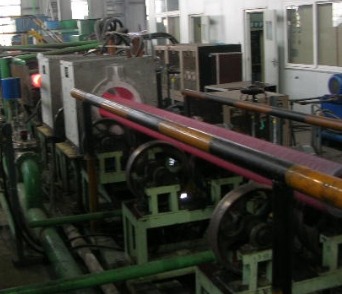- 11
- Feb
What are the conditions for using robots or manipulators for induction heating furnaces?
What are the conditions for using robots or manipulators for ਇੰਡਕਸ਼ਨ ਹੀਟਿੰਗ ਭੱਠੀਆਂ?
As early as the 1980s, robots have been applied to induction hardening machine tools. The robot operation is mainly used in the following aspects:

1) The workpiece is bulky. The use of robot operation can reduce the labor intensity of the operator and increase productivity. For example: EFD uses robots to load and unload car crankshafts on the CIHM x x-R crankshaft quenching machine, with a production rate of up to 60 pieces/h.
2) Multi-workpiece loading and unloading. With the development of multi-axis quenching machine tools, operators cannot load and unload multiple workpieces at once, but can only use robots. The robot used by SAET company can install four 1000mm long axes at a time.
3) Loading and unloading of hot workpieces. After the flywheel ring gear is quenched, it should be heated by power frequency, hot mounted on the flywheel, and fixed to the flywheel with a shrink fit. Now using a manipulator, the self-tempering flywheel ring gear after quenching can be directly sleeved on the flywheel for hot assembly while it is hot, reducing the number of processes. Therefore, the use of manipulators is very consistent with labor protection regulations.
4) In chemical heat treatment such as induction heating and impregnation, the role of robots can be further brought into play.
5) Use robot operation to perform advanced induction hardening process performance. At the ASM Heat Treatment Exhibition in the United States, a robot was used to operate the sensor for surface induction hardening, which promoted the enhancement of the concentrated magnetic field after the magnet was installed on the sensor.
